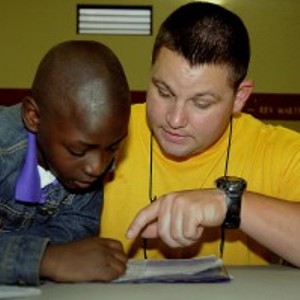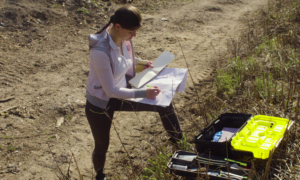 In Homer’s “Odyssey,” Mentor was a trusted family friend and advisor who assumed responsibility for the education of Odysseus’ son Telemachus when Odysseus left for the Trojan War. Later in the story, when the goddess Athena visits Telemachus to advise him on his quest to find his father, she assumes the shape of Mentor. Thus, the term mentor has come to mean a wise and trusted advisor.
In Homer’s “Odyssey,” Mentor was a trusted family friend and advisor who assumed responsibility for the education of Odysseus’ son Telemachus when Odysseus left for the Trojan War. Later in the story, when the goddess Athena visits Telemachus to advise him on his quest to find his father, she assumes the shape of Mentor. Thus, the term mentor has come to mean a wise and trusted advisor.
We could all use a good mentor now and then, and young people facing challenges may have the greatest need of all. Mentoring programs are a popular way to provide guidance to young people, and increasingly such programs are asked to provide services to higher-risk youth, for instance those involved with the juvenile justice system, or who are in foster care. But how well do such programs work, and is anything known about what variables may influence the outcomes of mentoring programs?
“The Role of Risk: Mentoring Experiences and Outcomes for Youth with Varying Risk Profiles,” a new report funded by the Bill and Melinda Gates Foundation and written by Carla Herrera, David L. Dubois, and Jean Baldwin Grossman, examines these questions by looking at seven programs providing volunteer, one-to-one mentoring of young people in community settings in Washington state.
The programs studied enrolled 1,310 young people, about half of whom were male and 57 percent members of ethnic minority groups; they ranged in age from 8 to 15, with an average age of 11. Almost all (99 percent) faced at least one environmental difficulty: for instance about two-fifths lived in households with annual incomes below $20,000, and about two-thirds came from single-parent households.
In addition, 71 percent faced one or more individual difficulties: for instance 53 percent were experiencing academic challenges such as failing multiple classes, and 48 percent had been diagnosed with a mental health problem or showed indications of depression. However, few were engaged in criminal activity or substance abuse.
The study included both a randomized, experimental design (used in the two largest programs) and a quasi-experimental design (used in the other five programs, and in the second year in the two largest programs).
Overall, Herrera and colleagues found that mentoring was associated with several positive benefits. First, young people receiving mentoring showed significant improvement on an aggregate measure created by the study authors and incorporating factors such as grades, school attendance, peer relationships and self-perceptions of academic abilities, as compared to those not receiving mentoring. (This result was found in both the experimental and quasi-experimental designs.)
Second, the authors found positive associations between mentoring and several specific outcomes. The experimental study found a significant positive relationship between mentoring and a reduction in depressive symptoms, and the quasi-experimental study found significant positive relationships between mentoring and school achievement, peer acceptance, positive beliefs about the ability to succeed in school and reduction in depressive symptoms. Neither study found significant associations between mentoring and truancy, misconduct, positive behavior toward peers or parent trust.
The study also looked at the relationships among types and levels of risk and the success of mentoring. Young people were classified into four risk categories based on whether they were high or low on environmental risk, and high or low on individual risk.
Overall, those in all risk categories received benefits from mentoring, with a trend toward more consistent and stronger benefits achieved by those experiencing individual rather than environmental risk. In addition, most young people and their mentors felt that they achieved at least a fairly strong, positive relationship, a finding that held true across all risk categories.
However, mentors reported different support needs, based on the risk profile of the young person they were mentoring. For instance, those mentoring young people with both high environmental and individual risk were likely to mention needing help in navigating social service systems, while those mentoring young people with high individual risks were likely to report needing support in dealing with the mentee’s social and emotional issues.
For this reason, the study authors suggested that young people be assessed for risk factors when they enter a mentoring program, and their mentors be offered appropriate training and support based on the needs of the mentee.
Not everyone is so fortunate as to have the goddess of wisdom pay them a visit when they are most in need of advice. But volunteer community members also make great mentors, even for young people facing serious challenges. With a little added support and targeted training, the process can work even better, for both the mentors and the young people they are guiding.
Photo credit: Community Gift Shop































